Gardeners grow many plants in their personal plots. Among them there are thermophilic cultures that are afraid of low temperatures. For this reason, they need a proper wintering, including tuber begonia. Winter storage of its tubers requires special conditions. Proper preparation and care will help this bright and beautiful flower to survive the winter and bloom again brightly in the coming season.
Content
a brief description of
The beauty of begonia always attracts attention with its bright color and long flowering. In appearance, she competes with roses and peonies, since they are very similar to each other. The bushes bloom beautifully even in shaded areas, and their flowering begins in the summer and ends only in September.
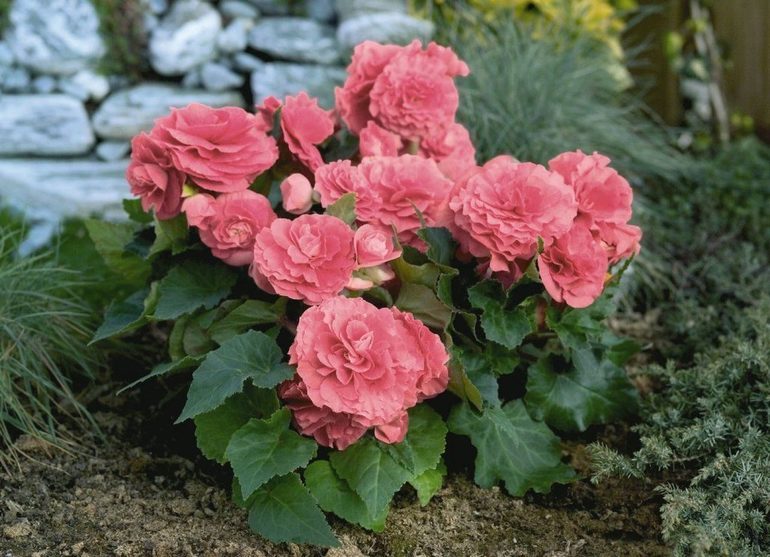
There are many varieties of garden begonias that have differences in the height of the bushes, the size of the buds and the shape of the petals. The largest specimens grow up to 40 cm in height. These flowers are divided into several types:
- bushy;
- decorative foliage;
- tuberous.
Each of them needs certain conditions in the winter. The first two species are not afraid of frost, so they can be left in the ground, if properly prepared for wintering. Tuber begonia is considered more demanding. Storage in the winter of this beauty will determine her future flowering and health.
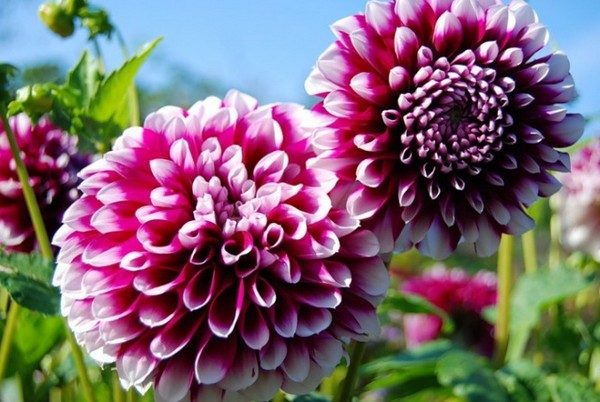 You may be interested in:
You may be interested in:Soil cultivation
Despite the small size of the bush, the begonia tubers are quite large. To achieve their growth, it is necessary to provide the plant with proper care. It develops well in the sun, although it blooms well in shady areas. The flower is thermophilic and prefers to grow on fertile soils. It responds well to regular watering and is not afraid of arid soil.
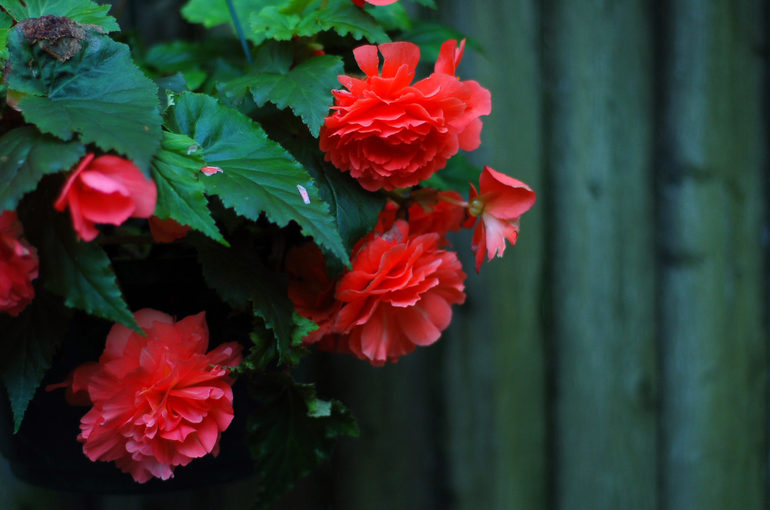
Winter preparations
At the beginning of autumn, all buds must be removed from begonia. This will allow the plant to accumulate the necessary nutrients in its tubers before the onset of frost. If this is not done, then the flower will spend all its strength on the development of budding and the growth of the aerial parts. When the plant accumulates the necessary supply, it enters the dormant phase until spring.

However, after cutting the buds, the flower cannot be dug out of the ground. It must remain in the ground so that its roots become more massive. In this state, he will normally tolerate the first autumn frosts, but it is better not to wait for this moment and get the bush out of the soil. This will allow the storage of begonia tubers in winter without unnecessary problems.
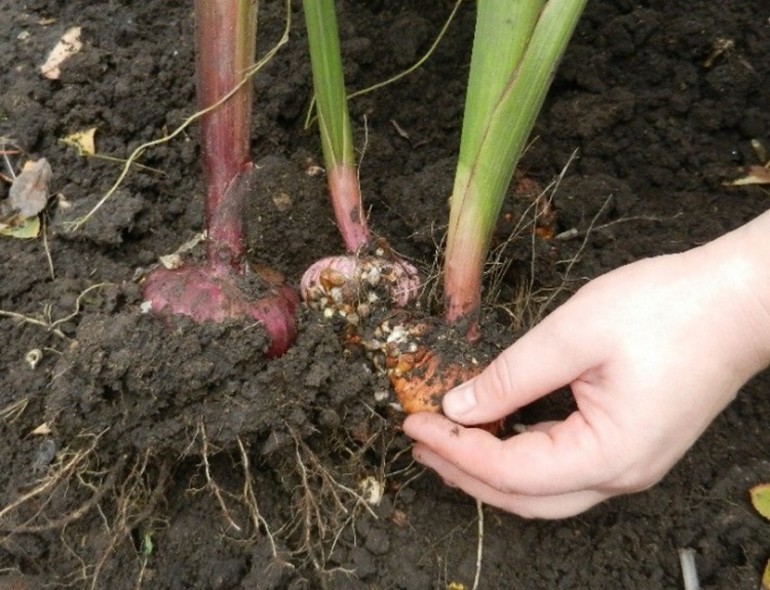 You may be interested in:
You may be interested in:Too early digging can lead to the fact that in the next season the plant will not bloom so splendidly. After removing the buds, it is necessary to reduce watering, and in rainy weather, cover it with a waterproof film.If frost suddenly struck and the bush did not stay in the soil for long, then nothing bad would happen to it. Roots are not frozen, but only the upper part of the plant.
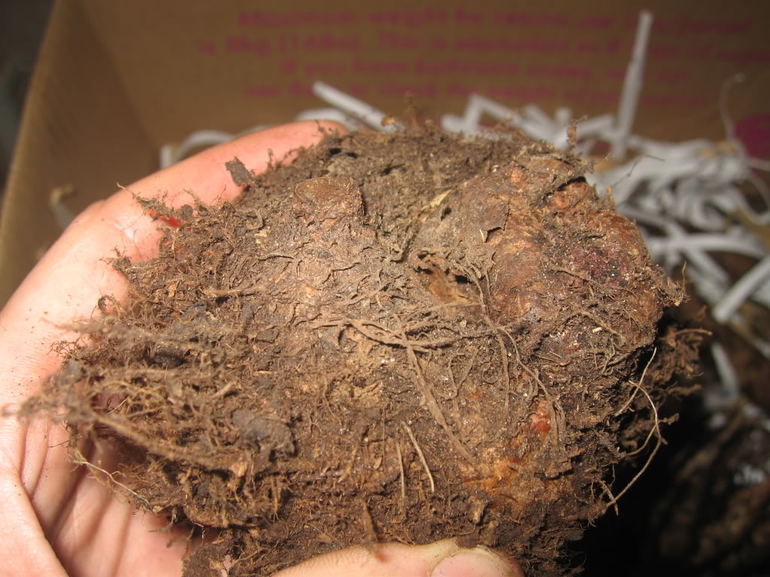
After this, it is advisable to sort the bushes, separating the smaller ones from the larger tubers. This is due to the fact that small roots dry out more. All flowers extracted from the soil should be placed in a container close to each other.
Now shoots should be removedleaving 3 cm long, and remove the soil from the roots. Tubers must be taken to a cool and dry place to dry. The optimal temperature for drying at a level of 14−16aboutC. In this condition, they should be around 2-3 weeks. During this time, the aboveground part dries up. The bushes should be laid out on cotton fabric.
Indoor storage
Experienced gardeners fill the root system with peat, sand and vermiculite. The last component gives off heat and has a moisture-absorbing property. Storage of begonia tubers in winter protects the plant not only from cold conditions, but also from harmful insects, rodents.
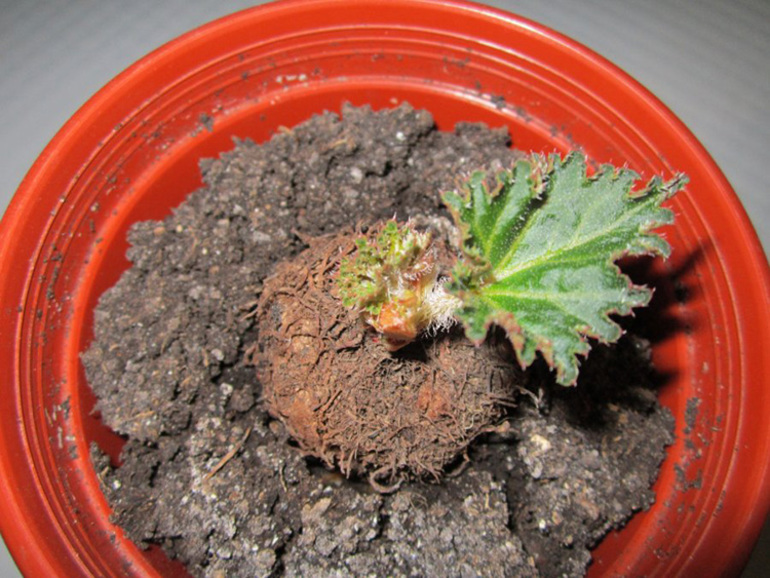
You can use sand with peat, mixing the composition in equal parts with the substrate in order to better preserve the tubers. It is necessary to choose a suitable container in the form of a box for storing tuber begonia. Winter care for her is simple, but requires certain conditions. For wintering, you need to have a room where the temperature will be kept at +100C, damp and darkened.
The composition must be periodically wateredso that the roots do not completely lose moisture and dry. If the humidity level in the room is kept at around 70%, then you can not water. It is also recommended that you sometimes check dug up plants so that fungal diseases do not appear on them during wintering. In case of severe damage, it is necessary to remove the foci, and if slightly damaged, then treat with brilliant green.
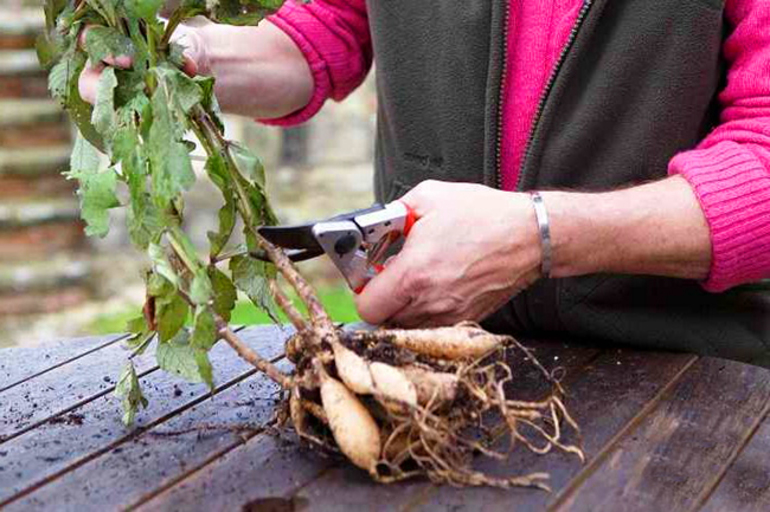 You may be interested in:
You may be interested in: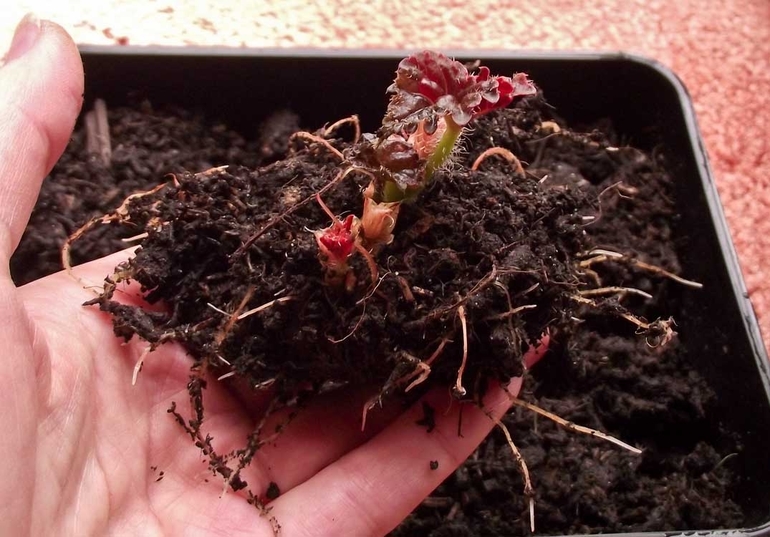
Such measures are suitable for adult plants, but in the first year, the dormancy is relative, and very often the upper part after digging remains green until spring. They should be left in a cool and bright place. Watering is performed infrequently, about 1 time per month, slightly moistening the composition.
If a young plant is obtained from seeds, then it can not be cut in the autumn, since in the winter growth continues. In the case of pruning as an adult bush, its shoots will die. For this reason, the plant is placed in a pot and kept at home.
How to keep begonia in the winter in the apartment - excites many who do not have a basement or cellar. In this case, the plant can be refrigerated. However, a large amount in a box cannot be placed, so something can be shifted into a package. It is pierced in several places for normal air exchange. After that, the contents are placed in the refrigerator and periodically inspect the tubers.
Leaving after a phase of rest
Around March, the begonias begin to awaken in the begonias. Plants should be removed and placed in a composition with a moist substrate for germination. It is prepared from the following components:
- 2 parts of peat;
- 1 part humus and river sand.
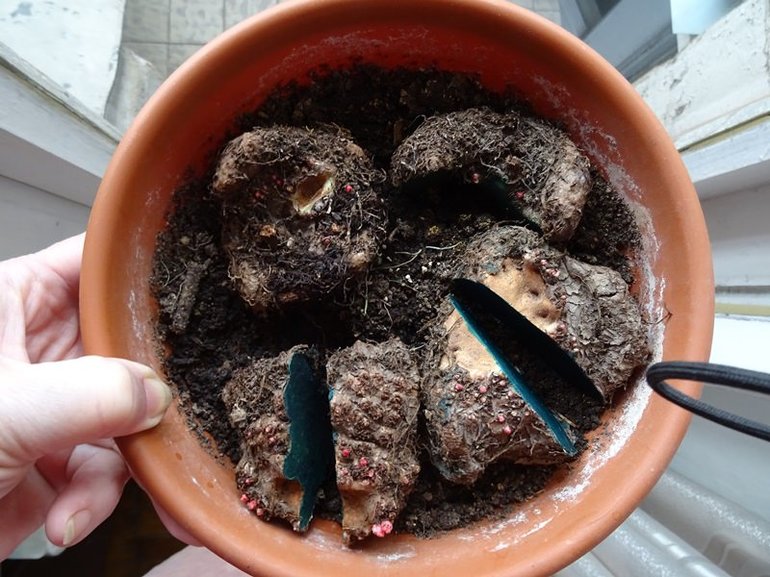
When placing a tuber in a container with such a composition, it must be looked after, creating certain conditions for active germination. Plants are placed closer to the light with a temperature of 18aboutC and limit watering. The growth process is slow and uneven. First, roots grow, and later aerial shoots. Begonia should not be placed in the sun, but obscured and regularly aired.
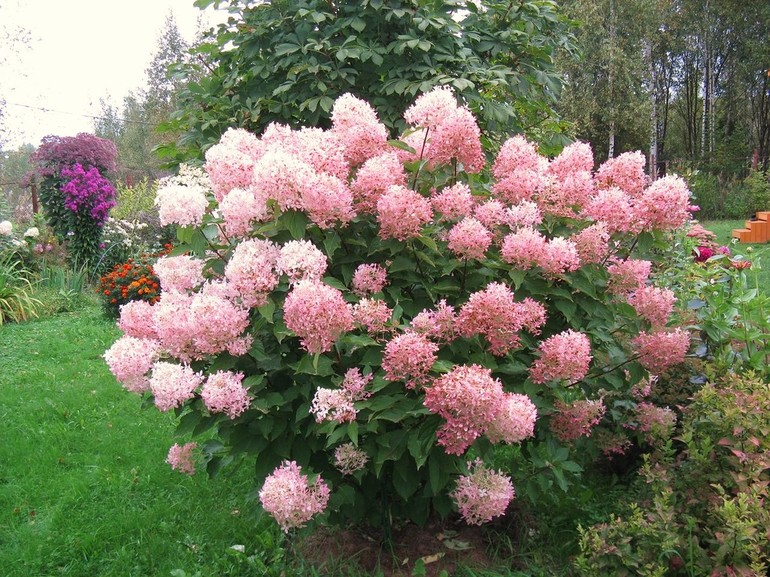 You may be interested in:
You may be interested in:During this period, it is best to divide and propagate tuber begonia. Slices are recommended to be sprinkled with charcoal or treated with colloidal sulfur. When the first leaves appear, the flowers can be planted in prepared pots. The base should be well covered and not planted in open ground until warm days come without spring frosts.
Landing in spring
Many experts recommend hardening plants before planting them in the open ground in spring. Often a flower loses foliage, but such a factor is considered the norm. Once the weather is warm, you can plant the plants on the prepared site.
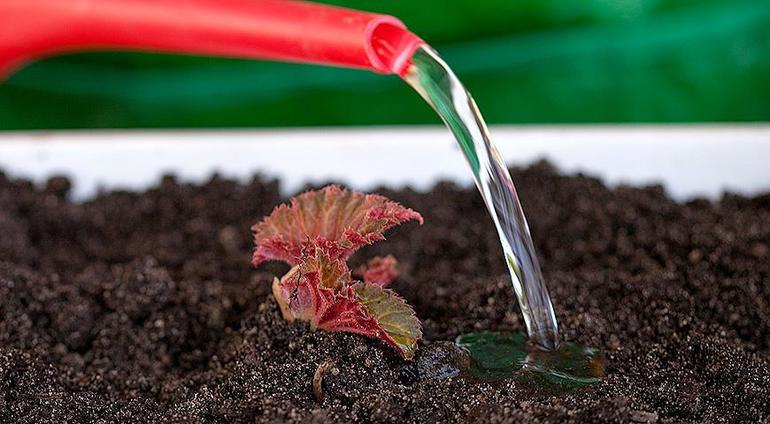
The soil on the flower bed should be loose with the addition of sand. For planting one tuber, it is necessary to allocate at least 15x15 soil surface area, if the plant is small. For adult specimens, approximately 30x30 cm will be needed for normal development. At the end of planting, the soil is covered with ash and humus.
Of great importance in the care is soil moisture. It must be ensured that it is not too wet or dry. The best time to water a begonia is in the morning. It is undesirable to spray the plant, otherwise brown spots appear on its foliage. If the height of the bush is large, then it is best to tie it up. This will help keep the stem in a consistent state.

 10 beautiful annuals that bloom all summer
10 beautiful annuals that bloom all summer Sow in the ground, without seedlings: 10 beautiful and unpretentious flowers
Sow in the ground, without seedlings: 10 beautiful and unpretentious flowers Platicodon planting and outdoor care
Platicodon planting and outdoor care Hosta - planting and care in the open ground in the Urals
Hosta - planting and care in the open ground in the Urals